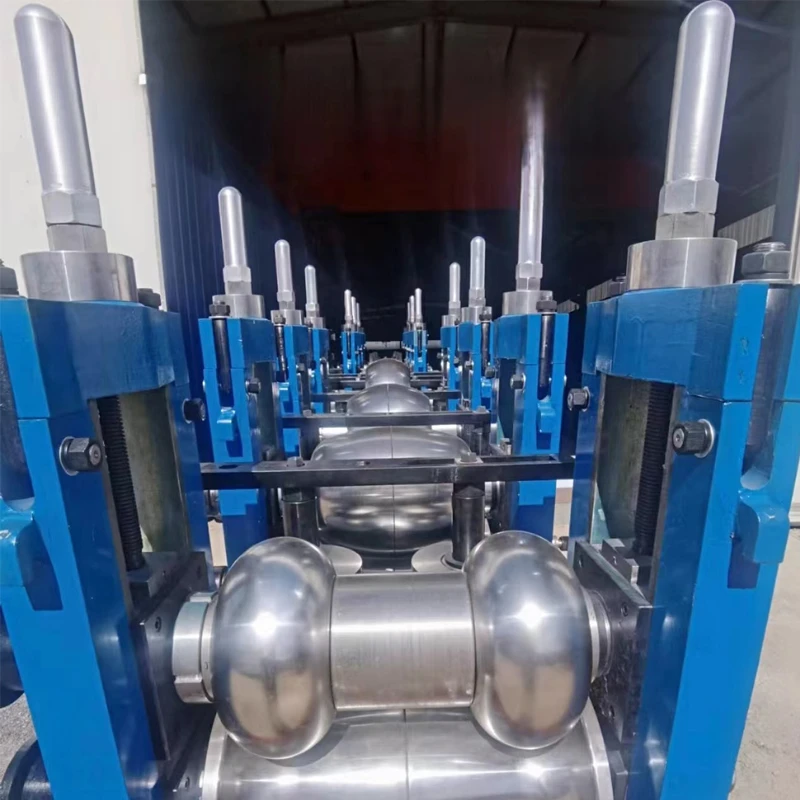rod straight machine
The Rod Straightening Machine An Essential Tool for Precision Metalworking
In the world of metal fabrication, ensuring the straightness of metal rods is crucial for various applications, ranging from construction to automotive manufacturing. The rod straightening machine has emerged as an indispensable tool in this realm, providing precision and efficiency in the processing of metal rods. This article delves into the working principles, benefits, applications, and advancements of rod straightening machines.
Understanding the Functionality
The primary function of a rod straightening machine is to correct the curvature or warping that may occur during manufacturing or handling processes. These machines utilize a series of rollers and adjustable frames to gradually pull and bend the metal rod back into its straight form. The process typically involves feeding a metal rod into the machine, where it passes through multiple rollers. As the rod travels through these rollers, pressure is applied in specific locations based on the curvature of the rod, straightening it to the desired alignment.
Most rod straightening machines use hydraulic or mechanical systems to apply the necessary force, allowing for adjustments in tension and speed. Some modern machines are equipped with computerized controls that enable operators to set parameters for precise straightening based on the specific requirements of the metal rod being processed.
Benefits of Using Rod Straightening Machines
1. Precision One of the main advantages of rod straightening machines is their ability to achieve high levels of precision. Straightened rods have improved dimensional accuracy, making them suitable for applications where alignment is critical.
2. Efficiency Automated straightening machines can process large quantities of metal rods in a relatively short time. This efficiency is essential for manufacturers aiming to maximize productivity while minimizing labor costs.
3. Versatility Rod straightening machines can handle various types of metals, including steel, aluminum, and brass. This versatility makes them a valuable addition to any fabrication shop that works with multiple materials.
4. Reduced Waste By ensuring that rods are straightened to the required specifications, manufacturers can significantly reduce material waste. This not only contributes to cost savings but also promotes sustainable practices in metalworking.
rod straight machine

5. Improved Product Quality Straightened rods enhance the overall quality of the final products. In industries like automotive and aerospace, where safety and performance are paramount, straightened rods contribute to the reliability and durability of components.
Applications in Various Industries
Rod straightening machines are utilized across a wide range of industries. In the automotive sector, straightened rods are used in the production of chassis components, suspension systems, and many other critical parts. In construction, the straightness of reinforcing bars is vital to ensure structural integrity in concrete applications.
Additionally, industries such as furniture manufacturing, machinery production, and appliance fabrication also rely on straightened rods for various functionalities. The precision and strength of straightened rods play a key role in the longevity and performance of products across these sectors.
Innovations in Rod Straightening Technology
Recent advancements in rod straightening technology have further improved the capabilities of these machines. The introduction of advanced sensors and automation technologies allows for real-time monitoring and adjustments during the straightening process. This not only ensures higher precision but also reduces the risk of operator error.
Moreover, the integration of Industry 4.0 principles has led to the development of smart rod straightening machines that can be connected to central manufacturing systems. These machines can analyze data, predict potential issues, and optimize processing parameters autonomously.
Conclusion
Rod straightening machines are vital in the metalworking industry, providing essential functionality that ensures the quality and performance of metal rods. With their precision, efficiency, and adaptability, these machines play a significant role in various manufacturing applications. As technology continues to advance, rod straightening machines will likely evolve, becoming even more sophisticated in their capabilities. Manufacturers who invest in such equipment will not only enhance their production processes but also maintain competitiveness in an increasingly demanding market. Whether in automotive, construction, or any other sector, the rod straightening machine remains a cornerstone of quality assurance in metal fabrication.
-
High Frequency Straight Seam Welded Pipe Production Line-BzZhou Xinghua Machinery Equipment Manufacturing Co., LTD.|Precision Welding, High EfficiencyNewsJul.30,2025
-
High Frequency Straight Seam Welded Pipe Production Line|BzZhou Xinghua|Precision Welding&EfficiencyNewsJul.30,2025
-
High Frequency Straight Seam Welded Pipe Production Line - BzZhou Xinghua|Precision Engineering&EfficiencyNewsJul.30,2025
-
High-Frequency Straight Seam Welded Pipe Production Line-BzZhou Xinghua Machinery Equipment Manufacturing Co., LTD.NewsJul.30,2025
-
High-Frequency Straight Seam Welded Pipe Production Line-BzZhou Xinghua Machinery Equipment Manufacturing Co., LTD.|Precision Manufacturing, High EfficiencyNewsJul.30,2025
-
High Frequency Straight Seam Welded Pipe Production Line-BzZhou Xinghua Machinery Equipment Manufacturing Co., LTD.|Precision Steel Pipe Manufacturing&Industrial EfficiencyNewsJul.29,2025


